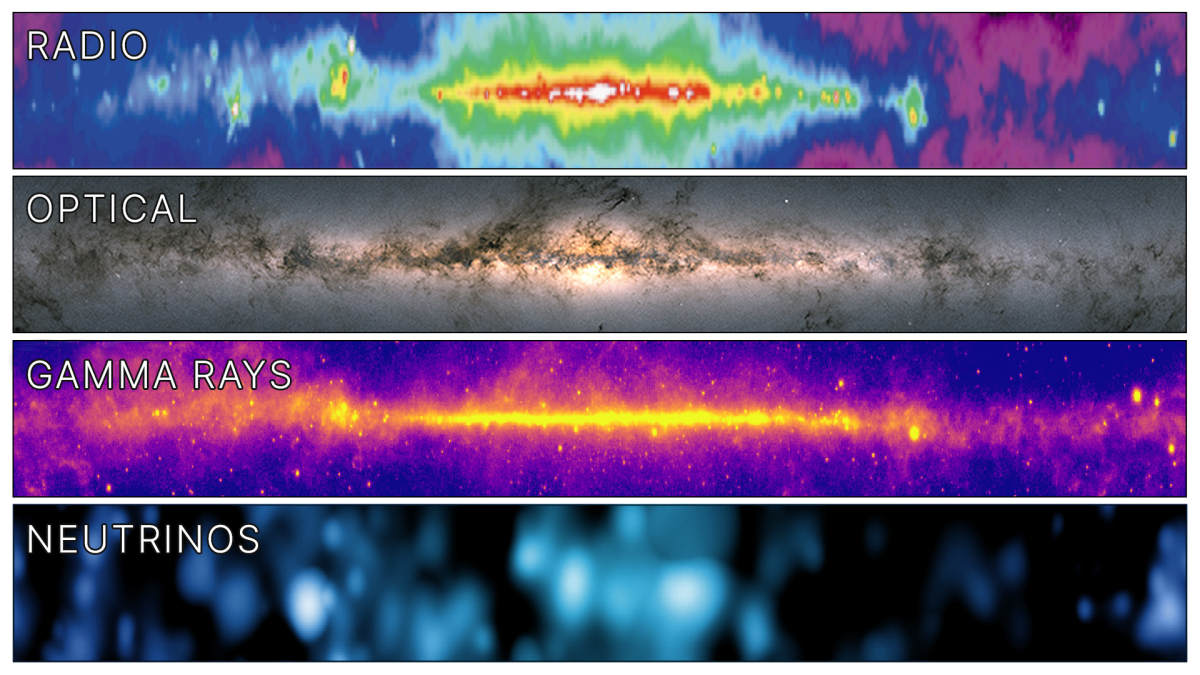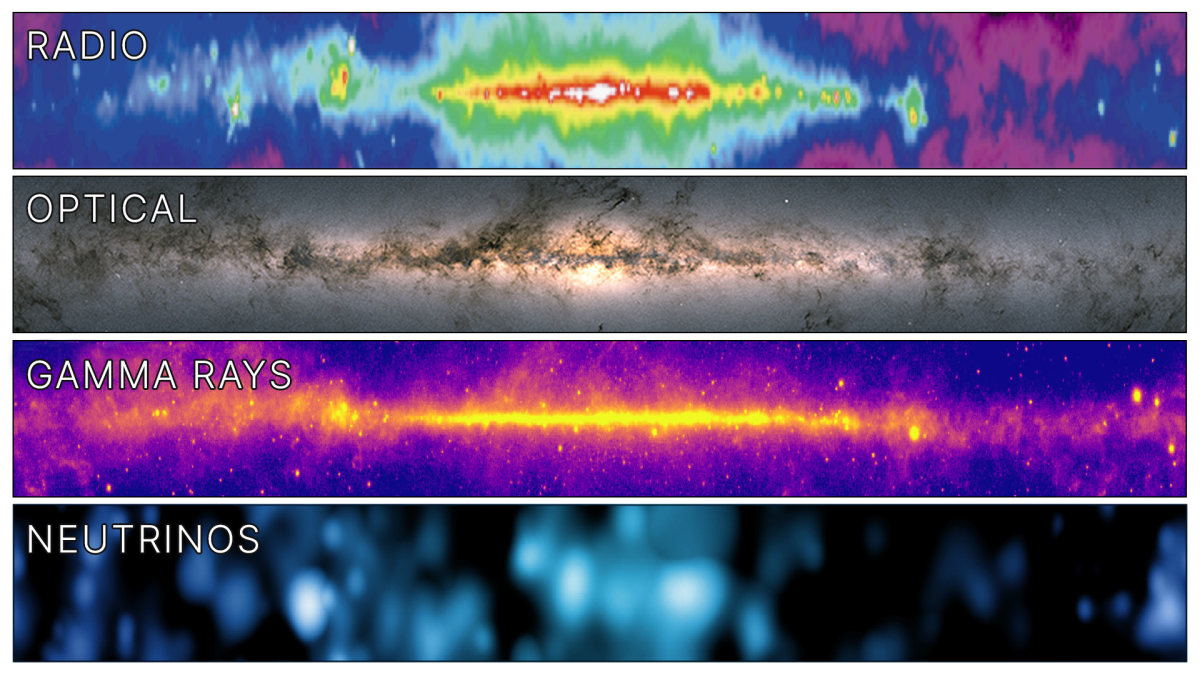Milky Way Viewed through Neutrinos
For eight years Naoko Kurahashi Neilson dreamed that one day the world would see the Milky Way in all its technicolor neutrino glory. That dream has now come true. Today the IceCube Collaboration, of which the Drexel University physicist is a member, has shared the first map of neutrino emission from our Galaxy [1]. “For the first time we see the Milky Way in something other than light,” Kurahashi Neilson says. “It’s amazing.”
The IceCube experiment is in Antarctica, where it utilizes a kilometer-cubed of ice as its detector volume (see Research News: Neutrino Astronomy Enters a New Era). Optical sensors installed in the frozen depths detect signals from neutrinos interacting with atoms in the ice. The researchers created their Galaxy map with neutrinos detected from the Southern Sky. This half of the celestial sphere is predicted to contain the bulk of the neutrinos emitted from our Galaxy. But spotting them has proved tricky.
IceCube detects high-energy neutrinos via two routes: “tracks” or “cascades.” A track develops when the collision of a neutrino with the detector’s ice produces a high-energy muon. This muon then zips through the ice, leaving a straight line of light signals in its wake. Researchers use these tracks to trace the neutrinos back to their likely sources with a high degree of accuracy. A cascade occurs when the colliding neutrino loses all its energy in a small region, imprinting a spherical signal in the ice. These spherical signals are difficult to backtrack, clouding the neutrino’s source. While cascades have long been part of the IceCube repertoire, until now they were largely unused in searches for neutrino sources.
“If you had asked a typical IceCube member five years ago if cascades would be a powerful imaging tool, they would have said no,” says IceCube spokesperson Ignacio Taboada from the Georgia Institute of Technology. “But now it’s obvious that they are.”
Kurahashi Neilson first came up with the idea to use cascade neutrinos to map the Milky Way in 2015. But for the idea to work, she and her team needed to find a way to better pinpoint the direction from which these neutrinos originate. They also needed to improve the filtering of cascade neutrinos from the large background of muons and neutrinos produced by the interaction of cosmic rays with Earth’s atmosphere. “I knew there was this interesting information in there; we just had to find a method to extract it,” Kurahashi Neilson says.
The method Kurahashi Neilson and her team developed uses an artificial intelligence (AI) model to extract the Milky Way’s cascade-neutrino signal from the background. Using simulated neutrino-cascade data, the AI model learns the properties of these neutrinos and then uses that information to filter them from real data. These filtered neutrinos are then further analyzed by the AI model, which traces back their paths through the cosmos—a trick it also learns from practicing on simulated data.
The map that Kurahashi Neilson and the IceCube Collaboration present today comes from their third attempt to put this image together. The first attempt involved two years of IceCube data, with the AI model extracting and pinpointing the locations of 263 cascade neutrinos. The second involved seven years of data and increased the cascade-neutrino count 10-fold. But neither map had a signal with a high enough statistical significance for the collaboration to be sure that the signal was real. That changed with this third map. This map pulls together 10 years of data, contains 60,000 cascade neutrinos, and has a statistical significance of 4.5 sigma. “This result is very solid,” Taboada says. Kurahashi Neilson agrees. “We can say with certainty that the [signal] is real,” she says.
The map resembles a series of interconnected blue, fuzzy blobs, whose distribution roughly corresponds to those of the radio, optical, and gamma rays with which astronomers have previously imaged the Southern Sky. The IceCube Collaboration has yet to analyze the information contained in these blobs, but Kurahashi Neilson expects that astronomers around the world will quickly start picking apart the map to see what secrets it contains. Francis Halzen of the University of Wisconsin-Madison and the principal investigator of IceCube agrees. “We have a whole new data set to play with,” he says.
One finding to tease out is the unexpected brightness of this Milky Way map. Using gamma-ray data, astronomers had made predictions about how the Galaxy should appear in neutrinos. This map doesn’t match those predictions, Taboada says. “The Galaxy turns out to be brighter in neutrinos that we expected.”
Kurahashi Neilson first saw the map on a Zoom call with two group members. The image left them all speechless, she says. “Think about all the people in the history of humanity that have looked at the Milky Way, whether with their own eyes or through a telescope. None of them saw this view. It was exciting to be first.”
–Katherine Wright
Katherine Wright is the Deputy Editor of Physics Magazine.
References
- IceCube Collaboration, “Observation of high-energy neutrinos from the Galactic plane,” Science 380, 1338 (2023).





